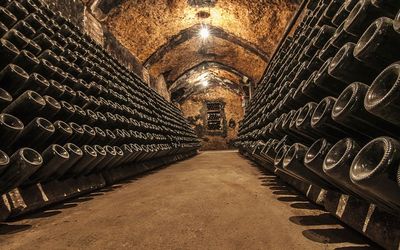MARKETING experts in the fast-moving consumer goods sector battle to understand the wine market and what distinguishes it from beer or soap powder. Accordingly, their advice to the industry association responsible for generic marketing has been to simplify the category. There is no connection between this and an achievable reality.
In SA, there are more than 600 producers, each of whom has a separate brand identity.
Since more than 6,000 different wines are produced annually, each cellar is responsible on average, for 10 products.
All would agree that reducing their range is as far down the road as they can go in tidying up what is available.
Most would concede that cutting back on the number of products would also make their lives easier. Their problem is that the extra labels sell extra litre.
Whether this is the most efficient way of doing so is a moot point. What they do know is that if they were to trim the number of products, their (profitable) bottled wines sales would decline, and their (unprofitable) bulk sales would have to increase.
The consumer goods gurus would like to see the wine market transformed into the old-style beer market. They reckon if grape growers just delivered their grapes to production plants where the fruit would be sorted, according to colour or sugar level, into blending components that could make no more than a total range of six wines, the business would boom.
They could be right, although outside the commodity segment, the pursuit of rarity is more important than the cost savings through efficiencies of scale.
Just look at the proliferation of labels in the craft beer and malt whisky sectors.
In the days when the per capita consumption in France was more than 110 litres per year, that’s how supermarket wine was sold. It was packed in 1-litre returnable glass, and was distinguished only by the alcohol level: Vin Rouge 10° or Vin Rouge 11°.
This model works in the commodity segment, where brand is largely irrelevant: think brown bread, canned tomatoes, or baked beans. We don’t really have that kind of wine market in SA, although creating additional demand by simplifying — or at least de-mystifying — the category would certainly help to bring new consumers into the category.
If all you’ve ever had to worry about is whether what is in the bottle is lager, stout or ale, the multiplicity of choices presented by a row of wine bottles in a supermarket can only be intimidating.
Is any producer up to the challenge? We have a number of major wholesalers and a few former co-operatives producing decent enough wine to ensure that the supermarkets can always have something on special for month-end or Valentine’s Day.
Several well-branded wines are found on shelf at less than R30, a measure as much of the clout of the retailers as it is of the efficiencies that the producers must implement simply to stay in the game. When packaging costs about R4 per bottle, and transport, distribution and excise close to R12, there’s not a lot of room for the grapes, which are supposed to be the defining feature of the beverage.
Developing a range of decent wines that could sell in returnable glass — and having the facilities to bottle and distribute in Gauteng — is something only Distell has been able to achieve.
Paarl Perle, produced in the Northern Cape and packaged in Gauteng, comes in at under R20 per bottle — thus proving that an entire such category is possible.
For the concept to have critical mass, more than one producer must get involved. Without this as part of the solution, the nongrape costs would always comprise the lion’s share of the price of the product. This is what makes cheap wine more expensive than beer, and not always as satisfying.




















Change: 0.40%
Change: 0.47%
Change: -0.49%
Change: 0.53%
Change: 1.03%
Data supplied by Profile Data
Change: 1.71%
Change: 1.28%
Change: 0.40%
Change: 0.00%
Change: 1.64%
Data supplied by Profile Data
Change: -1.27%
Change: 0.00%
Change: 0.05%
Change: -0.08%
Change: 0.35%
Data supplied by Profile Data
Change: -0.02%
Change: 0.21%
Change: -0.06%
Change: 0.53%
Change: 0.70%
Data supplied by Profile Data